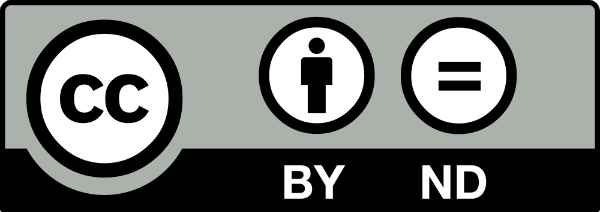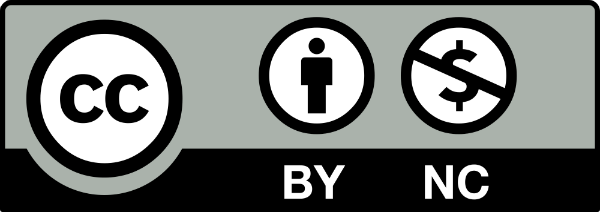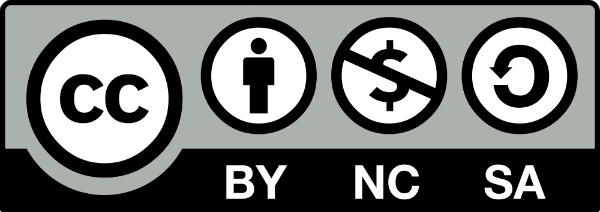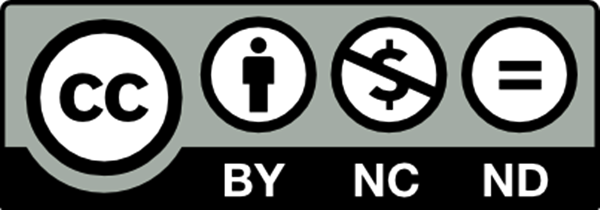
When a person or company creates material – be it a work of literature, software, art, music, film, maps, logos, newspaper articles, song lyrics and more – copyright gives that person the right to control the use of their material.
This means that creators of an original piece of work maintain control over how it is used, which is not only fair but required in order for them to make a living from their talent and efforts.
If a creator wants to protect their material they will sometimes publish a copyright symbol © followed by the name of the copyright owner and year of creation.
Example: © Microsoft Australia 2016.
With the rise of the Internet, copying is everywhere. As such, a group of people have invented a new model of licensing works of art and this is called Creative Commons.

Creative Commons
Imagine you invested tons of time, effort and money to learn how to make professional photographs. Moreover, you bought a nice and pricey camera and started taking photos for a living.
At some point, people start loving your great work! Moreover, they love it so much they use it as they please. BUT, you get nothing out of it! They don’t even include a mention of your name. You would hate that! Everybody does.
This scenario has been happening a lot ever since the Internet has been around. It’s become easier to find, enjoy, share and use other people’s intellectual and creative property. That’s why people felt the need to protect their work and so a bunch of amazing people developed an amazing system called Creative Commons.
Creators use a Creative Commons license in order to place restrictions and ‘rules’ around usage.
Creative Commons is a non-profit organisation offering free, easy-to-use copyright licenses that provide a simple, standardised way to give the public permission to share and use your creative work. This works alongside copyright and enables creators to modify their copyright terms to best suit their needs.
Some people want to get paid for their photos. Others want to give it for free, but only if you’re not going to make money out of them in some way. Some photographers really don’t mind if you just take some of their photos and use them as you please.
That’s why Creative Commons created different types of copyright licenses.
These licenses are based on several factors that include attribution, derivative works based on the original, sharing and commercial use. Each of these has its own icon. These icons have been taken from the Creative Commons website.
1: Public Domain Mark

This label is also called CC0 or referred to as ‘No Known Copyright’. Obviously, this mark is on the material that is free to use in any way. It is not protected under any known laws around the world.
It usually applies to the work of teachers and educators that want to spread their material for free or the museums and libraries that want to mark works which copyrights expired.
2: Attribution CC BY

This is, perhaps, one of the most commonly used licenses. It allows you to alter, share and use this work commercially if you want – as long as you credit the author or license holder.
3: Attribution – ShareAlike CC BY-SA

This is the license that is most commonly used for open source software and content created for Wikipedia.
Namely, you can share it, alter it, or use it for the commercial purposes, but all your works based on it have to credit the license holder and have the same type of license. This is also called ‘copyleft‘.
4: Attribution NoDerivs CC BY-ND

Works that hold this type of license can be used and distributed for commercial and non-commercial uses, as long as the due credit is given. It is very important to remember that the work needs to be used as a whole and unchanged.
5: Attribution – non-commercial CC BY-NC

You can use these works non-commercially, share it and change it while crediting the license holder. However, all the derivative work does not have to be under the same license but it needs to be non-commercial.
6: Attribution-non-commercial-ShareAlike CC BY-NC-SA

Similarly to the license above, these works can be used non-commercially, credited and altered, but the license of that work needs to be identical to the original.
7: Attribution-non-commercial-NoDerivs CC BY-NC-ND

Works under this license are very much protected. You can use it as a whole and share it only if you give proper credit to the license holder. Moreover, you can do all these things only if you are doing them non-commercially, and without any alterations
In summary, you must have permission to reuse someone else’s creation. It is illegal to use any sort of work without crediting the author. However, it is important to remember that Creative Commons is NOT only about images and photos.
You have to be careful with any sort of work you want to use that you haven’t created yourself.
How Does It Apply to Your Work?
It has EVERYTHING to do with your work. It may even cost you your job.
In our line of work as online workers (e.g. Web Developers, Designers, Administrators and Content Producers) we often wish to use photographs and images that have been created by other people. These images are usually found online in Google’s search results, Flickr, blogs, photo libraries and many other places.
Let’s say you choose a photo to use on your employer’s website and you think that nobody will notice that it is copyright protected. Your website becomes very well visited and some of those numerous visitors report the unattributed use of the photo. The author can then sue your employer.
So, firstly, your employer will pay a fine. It can be a very hefty one. More importantly, the reputation of that business is going down the drain! All that time, money and effort put into building the brand and wasted. Moreover, this kind of trust is next to impossible to regain.
Needless to say, even if your employer is not angry with you, they will have to let you go as they cannot afford to pay those fines.
It is important that you understand copyright and licensing issues otherwise your activity may be illegal.
There are even some famous copyright cases. There is a big dispute between Apple and Microsoft over the GUI, numerous cases for breaking the copyright laws when it comes to music, and so on. For example, during the presidential campaign for Barack Obama in 2008, called Hope, street artist Shepard Fairey created a poster based on a photo that wasn’t his.
Namely, Associated press sued Fairey because he used a photo they published without respecting the copyright. Fairey got sentenced to two years of probation.
If you are in doubt as to whether an image is available for reuse, then do not use it. The creator always needs to clearly state on their website or in their photo account that the image is available for reuse.
How Do People Even Know if Their Work Is Used?
A lot of very smart and capable people worked on this issue – how to know if your work is being used? They developed a lot of apps and software that can help people protect their work and its use on the Internet.
Here are some of the apps that you can use to check if the work you want to use is copyrighted and how.
Apps That Track Images:
1: TinEye
TinEye is a reverse image search option. You can upload your image or image URL at TinEye home page and it will search the web for your image and any derivative work based on it. You can also search images by colour.
Also, there is an option of downloading a browser plugin.
2: Digimarc
This company deals with both images and documents. They offer Adobe add-on. Also, their services are classified as Basic, Professional and Enterprise. Check out Digimarc website for more info about each of them.
Apps That Track Text:
1: CopyScape
CopyScape is one of the most famous systems that check the Internet for plagiarism. Once you write an article or any other written piece, you can upload it to Copyscape.com and see if it counts as copied material.
2: Article Checker
This is a good alternative to CopyScape. ArticleChecker will scan a text line by line. While it is mostly used in the academic circles, it will prove itself to be quite useful to you, as well.
Now you know how important the copyright is, what the most important licenses of Creative Commons there are, how it all affects you and how to track plagiarism.
Use that knowledge to become a reliable online employee who understands the value of other people’s work. Your job depends on it.
Frequently Asked Questions
1. Attribution BY allows you to
a. You can use, share, change, even commercially, but credit the author
b. You can use, share, change, even commercially, but credit the author and derivative work has to have the same license.
c. You can use, share, even commercially but only unchanged and as a whole, and credit the author.
d. You can use, share, change, non-commercially, but credit the author and derivative work doesn’t need to be under the same license but needs to be non-commercial.
e. You can use, share, change, non-commercially, but credit the author and derivative work needs to be under the same license.
f. You can use and share, non-commercially only as a whole and only if you credit the author.
2. Attribution-ShareAlike CC BY-SA
a. You can use, share, change, even commercially, but credit the author.
b. You can use, share, change, even commercially, but credit the author and derivative work has to have the same license.
c. You can use, share, even commercially but only unchanged and as a whole, and credit the author.
d. You can use, share, change, non-commercially, but credit the author and derivative work doesn’t need to be under the same license but needs to be non-commercial.
e. You can use, share, change, non-commercially, but credit the author and derivative work needs to be under the same license.
f. You can use and share, non-commercially only as a whole and only if you credit the author.
3. Attribution-NoDerivs CC BY-ND
a. You can use, share, change, even commercially, but credit the author.
b. You can use, share, change, even commercially, but credit the author and derivative work has to have the same license.
c. You can use, share, even commercially but only unchanged and as a whole, and credit the author.
d. You can use, share, change, non-commercially, but credit the author and derivative work doesn’t need to be under the same license but needs to be non-commercial.
e. You can use, share, change, non-commercially, but credit the author and derivative work needs to be under the same license.
f. You can use and share, non-commercially only as a whole and only if you credit the author.
4. Attribution-non-commercial CC BY-NC
a. You can use, share, change, even commercially, but credit the author.
b. You can use, share, change, even commercially, but credit the author and derivative work has to have the same license.
c. You can use, share, even commercially but only unchanged and as a whole, and credit the author.
d. You can use, share, change, non-commercially, but credit the author and derivative work doesn’t need to be under the same license but needs to be non-commercial.
e. You can use, share, change, non-commercially, but credit the author and derivative work needs to be under the same license.
f. You can use and share, non-commercially only as a whole and only if you credit the author.
5. Attribution-non-commercial-NoDerivs CC BY-NC-ND
a. You can use, share, change, even commercially, but credit the author.
b. You can use, share, change, even commercially, but credit the author and derivative work has to have the same license.
c. You can use, share, even commercially but only unchanged and as a whole, and credit the author.
d. You can use, share, change, non-commercially, but credit the author and derivative work doesn’t need to be under the same license but needs to be non-commercial.
e. You can use, share, change, non-commercially, but credit the author and derivative work needs to be under the same license.
f. You can use and share, non-commercially only as a whole and only if you credit the author.
6. Attribution-non-commercial-ShareAlike CC BY-NC-SA
a. You can use, share, change, even commercially, but credit the author.
b. You can use, share, change, even commercially, but credit the author and derivative work has to have the same license.
c. You can use, share, even commercially but only unchanged and as a whole, and credit the author.
d. You can use, share, change, non-commercially, but credit the author and derivative work doesn’t need to be under the same license but needs to be non-commercial.
e. You can use, share, change, non-commercially, but credit the author and derivative work needs to be under the same license.
f. You can use and share, non-commercially only as a whole and only if you credit the author.
